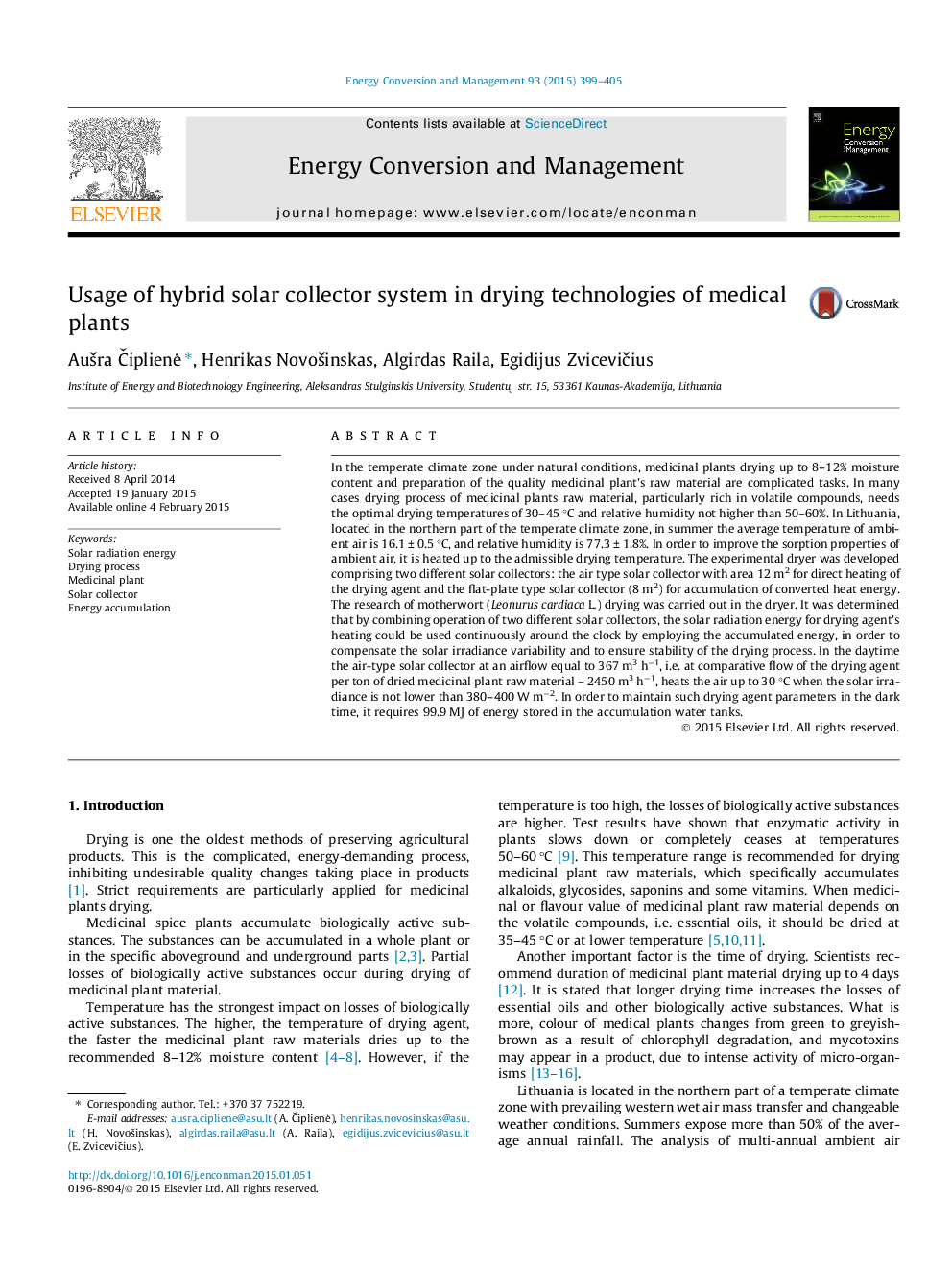| Article ID | Journal | Published Year | Pages | File Type |
|---|---|---|---|---|
| 7162904 | Energy Conversion and Management | 2015 | 7 Pages |
Abstract
In the temperate climate zone under natural conditions, medicinal plants drying up to 8-12% moisture content and preparation of the quality medicinal plant's raw material are complicated tasks. In many cases drying process of medicinal plants raw material, particularly rich in volatile compounds, needs the optimal drying temperatures of 30-45 °C and relative humidity not higher than 50-60%. In Lithuania, located in the northern part of the temperate climate zone, in summer the average temperature of ambient air is 16.1 ± 0.5 °C, and relative humidity is 77.3 ± 1.8%. In order to improve the sorption properties of ambient air, it is heated up to the admissible drying temperature. The experimental dryer was developed comprising two different solar collectors: the air type solar collector with area 12 m2 for direct heating of the drying agent and the flat-plate type solar collector (8 m2) for accumulation of converted heat energy. The research of motherwort (Leonurus cardiaca L.) drying was carried out in the dryer. It was determined that by combining operation of two different solar collectors, the solar radiation energy for drying agent's heating could be used continuously around the clock by employing the accumulated energy, in order to compensate the solar irradiance variability and to ensure stability of the drying process. In the daytime the air-type solar collector at an airflow equal to 367 m3 hâ1, i.e. at comparative flow of the drying agent per ton of dried medicinal plant raw material - 2450 m3 hâ1, heats the air up to 30 °C when the solar irradiance is not lower than 380-400 W mâ2. In order to maintain such drying agent parameters in the dark time, it requires 99.9 MJ of energy stored in the accumulation water tanks.
Related Topics
Physical Sciences and Engineering
Energy
Energy (General)
Authors
AuÅ¡ra ÄiplienÄ, Henrikas NovoÅ¡inskas, Algirdas Raila, Egidijus ZviceviÄius,
